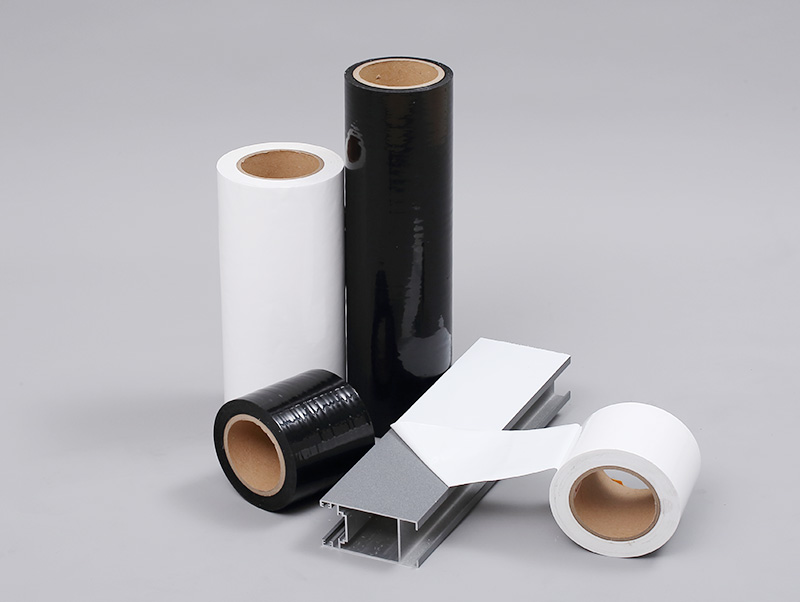Top 7 Benefits of Using PET Protective Film for Industrial Applications
When it comes to safeguarding surfaces during manufacturing, storage, or transportation, PET protective film (Polyethylene Terephthalate) stands out as a highly reliable solution. From automotive panels to electronics and construction materials, industries across the board are adopting this advanced film to ensure the quality and integrity of their products.
In this comprehensive guide, we’ll break down the top 7 benefits of using PET protective film for industrial applications and show you why it's a must-have in modern industrial settings. Whether you're in manufacturing, fabrication, or assembly, this article is for you.
1. Exceptional Surface Protection
One of the most obvious yet crucial advantages of PET protective film is its ability to protect surfaces from scratches, dust, and damage. In many industries, final products undergo multiple processes before reaching the end-user—cutting, welding, bending, transporting, and storage.
During all these stages, surfaces like glass, metal, plastic, and painted panels can easily suffer from cosmetic damage that compromises quality. PET film acts as a shield, preserving the original surface finish until it’s ready to be revealed.
Key Industries That Benefit:
Electronics (screen protection)
Automotive (painted panels and interior trims)
Metal fabrication (stainless steel, aluminum)
2. Superior Chemical and Heat Resistance
Unlike standard plastic films, PET protective film boasts high resistance to heat and chemicals, making it ideal for environments that involve high temperatures, solvents, or acidic/alkaline exposure.
This feature is particularly valuable in:
Powder coating lines
Chemical processing plants
High-speed manufacturing
The film won’t deform, melt, or release harmful gases, maintaining integrity even under extreme conditions. Its resistance to chemical reactions also helps prevent corrosion or contamination of delicate surfaces.
3. Crystal Clear Transparency for Easy Inspection
In certain industries, visual inspection is essential at every stage of production. PET protective films offer high transparency, allowing workers to examine parts without having to remove the film.
This transparency is incredibly useful in:
Electronics (e.g., touch panels, LED displays)
Aerospace (instrument panels)
Optical equipment
Manufacturers can easily spot issues or verify branding without compromising surface protection.
4. Strong Adhesion with Easy Removal
One of the most frustrating issues in manufacturing is using a protective film that either peels off too early or leaves behind sticky residues. PET films strike the right balance with high-performance adhesives that hold firm during use but peel away cleanly when no longer needed.
Benefits of This Feature:
No extra cleaning labor
No surface damage upon removal
Saves time and operational costs
Plus, customizable adhesive strength means that the film can be tailored to stick more aggressively for rough environments or more lightly for delicate surfaces.
5. Eco-Friendly and Recyclable Material
As industries move toward more sustainable practices, PET film offers a greener alternative. Unlike PVC-based protective films, PET is recyclable and free from toxic substances like chlorine or heavy metals.
This makes PET film an attractive option for:
Green-certified manufacturers
Eco-conscious brands
Regulated industries with sustainability goals
Not only is the film itself recyclable, but many suppliers also offer films made from post-consumer recycled materials, further reducing environmental impact.
6. Customizable Thickness and Coating Options
PET protective films are available in a wide range of thicknesses, finishes, and coating types, making them versatile for different industrial applications. Whether you need anti-static properties, UV resistance, anti-fog features, or matte/gloss finishes, there’s a PET film to match.
Examples of Customizations:
Anti-glare film for automotive displays
UV-blocking layers for outdoor signage
Anti-static coating for semiconductor components
Such adaptability makes PET film an all-in-one solution, minimizing the need for multiple protective products across different stages of production.
7. Cost-Efficient in the Long Run
While PET protective film might have a slightly higher upfront cost than some alternatives, the long-term savings far outweigh the initial expense. Here’s how:
Reduces surface damage and rework
Minimizes customer complaints and returns
Speeds up quality checks with transparent inspection
Cuts down on cleaning and post-processing labor
In essence, it helps maintain product integrity while streamlining operations and reducing waste, leading to a healthier bottom line for manufacturers.
Bonus: Easy Integration with Automation Systems
With industrial automation becoming the norm, PET protective films are designed to be compatible with automatic lamination and de-lamination machines. This saves labor and ensures consistent application quality.
Industries using robotic arms or conveyor-based systems can effortlessly include PET film into the workflow without disrupting efficiency.
Real-World Industrial Applications of PET Protective Film
Let’s take a closer look at how some industries put PET film to work:
Automotive Industry
Protects painted parts, chrome trims, and dashboard panels during assembly
Used for both interior and exterior protection
Electronics
Guards display screens from scratches during assembly or shipping
Maintains static-free environments with anti-static variants
Metal Processing
Shields polished or brushed stainless steel sheets
Prevents corrosion or scratches during storage and transport
Construction & Architecture
Protects decorative panels, glass, and aluminum profiles
Offers UV resistance for outdoor applications
Choosing the Right PET Protective Film: What to Consider
Not all PET films are created equal. To choose the right one for your application, consider the following factors:
Surface type (glossy, matte, textured)
Temperature range during application
Required adhesive strength
Environmental conditions (humidity, exposure to chemicals, UV light)
Duration of protection needed (temporary or long-term)
Consult with your film supplier to get custom-engineered solutions if standard products don’t meet your needs.
Conclusion
In a competitive industrial landscape, the smallest details can make the biggest difference. PET protective film is a powerful yet cost-effective solution that helps safeguard valuable surfaces, maintain product quality, and improve operational efficiency across various sectors.
From heat resistance to eco-friendliness, the benefits of PET film are too substantial to ignore. Whether you're looking to reduce rework, cut down on waste, or improve customer satisfaction, PET protective film is an investment that pays off in both quality and performance.




